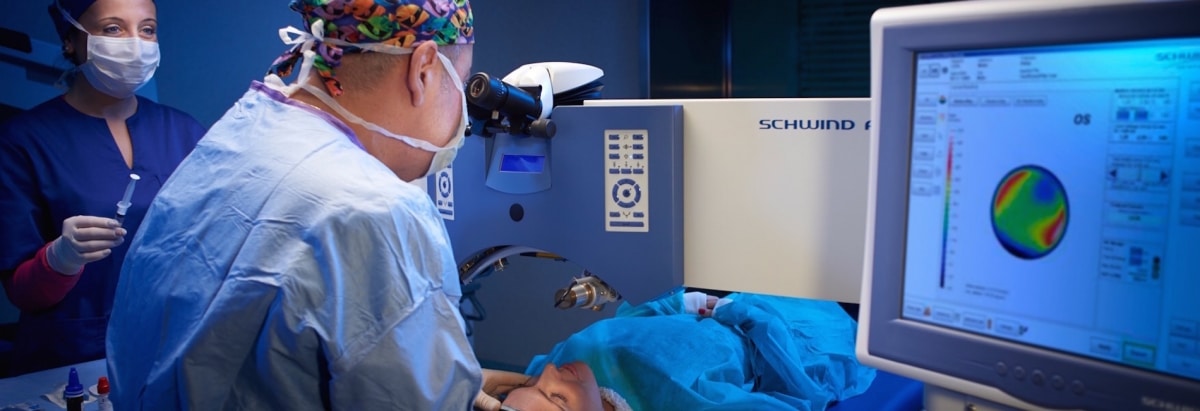Cerclage for retinal detachment
Eyeball cerclage is a surgery procedure performed both to prevent retinal detachment in pathological conditions of the retina at particular risk of developing toward a detachment, and for the treatment of retinal detachment, when this has already occurred. It consists in applying a solid band of silicone, similar to a belt, around the eyeball, in order to bring the part closer to the detached retina, occlude any holes or breaks, and then repair the retinal detachment by restoring the retina back to its normal state of adhesion.
Episcleral surgery for retinal detachment acts working on the outer wall of the eye, the sclera; it is opposed to vitrectomy, which is performed instead inside the eye. The two techniques can sometimes be combined in particularly complex conditions so as to maximize the result. When cerclage, in special cases, is unable to resolve a retinal break and, consequently, to close all the areas of detachment, it is possible to perform a retinal buckling procedure, which consists in inserting other parts of silicone that are placed in such a way as to coincide with the holes, thereby causing their closure. In this way, the retina gets closer again to its wall.
In order to prevent the reopening of the areas of detachment, the eye can also be treated with cryotherapy (i.e. cold treatment) or with diathermy, therapeutic additions that create a solid scar between the retina and the underlying layers. The probability of success of episcleral surgery in retinal detachment is often higher the earlier the diagnosis and surgery are performed, even up to 80-90%.
Cerclage surgery is ideal in young patients, in patients who have not yet undergone cataract surgery, as it hardly stimulates the evolution of the cataract into opacity, and in patients with medium-easy retinal detachment. Vitrectomy is often preferred to more complex situations. Compared to the latter, retinal cerclage is a less invasive surgical practice, as it does not affect the internal portion of the eye, nor does it result in the formation of cataracts; vitrectomy is sometimes restricted to more complex cases and is therefore more difficult and laborious. It almost always ends with the injection of liquid silicone or gas in place of the vitreous humour. In the first case, an additional surgical period of time should also be considered, at a distance of a few months from the first, for the removal of the implanted silicone, once the retina can be considered stabilized.
Want to learn more?


